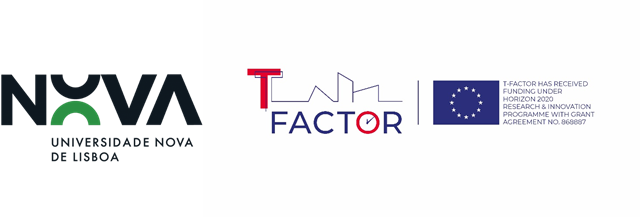
26 June 2021Ical
June 2021 – October 2022
Curators: Joana Braga, Margarida Brito Alves and Margarida Medeiros
As part of the T-Factor project,Nomadic Territories is a cycle of walks that aims to contribute to the understanding of Trafaria through a direct involvement with the place and its various communities.
In this sense, and based on routes that will be defined by invited participants, Trafaria will be traversed based on different perspectives and approached not only as a territory with specific geographic and physical characteristics, but also as a place that incorporates stories and memories , or as a political and social space.
OUR BEACH, WHICH IS THE RIVER, OUR SEA WHICH IS HOME
Francisco Pinheiro
Saturday, June 26, 10:00 am
Registrations: nomadasterritoriosnomadas@gmail.com
Meeting point: Trafaria River Terminal, 10:00 am
Approximate duration: 4h (includes picnic stop)
Max. of participants: 20
Age groups: youth and adults
Route: circular
It is suggested that participants bring a hat and comfortable shoes, water and sunscreen and a small snack for the picnic.
The use of a mask is mandatory and all COVID-19 safety and protection standards will be complied with.
On this walk, our attention will be directed to the presence of water, either from traces of thousands of years of the Costa da Caparica Fossil Cliff, or from the signs of an uncertain future to which this coast is exposed.
Costa da Caparica is considered a coastal place of great vulnerability to extreme events and storms. The scientific community believes that the sea will rise two meters in seventy years, which means that a good part of the coastal population is in a situation of imminent danger. The truth is that this coastal fragility — that is, the lack of sand replacement that fights the sea — also concerns a river, the Tagus, which, because it is controlled by hundreds of dams and hydroelectric plants, does not move the sediments that it used to carry. to its mouth.
The walk includes the participation of Ana Catarina Miranda, researcher of the project by Rios Livres, of the Study Group on Spatial Planning and Environment (GEOTA) and Francisco Silva, historian, linked to the Almada Archeology Center.
Francisco Pinheiro is a visual artist and his practice is based on collective narratives associated with a certain territory, summoned in installations, videos, texts and performances. He has presented his work in different spaces and cultural events such as Lisboa Soa, Penha sco - Arte Cooperativa, Museum of Neo-Realism, Instituto Camões, Appleton or Galeria 111. He has a Master's Degree in New Genres from the San Francisco Art Institute (USA, 2014) with a Fulbright/Carmona e Costa Foundation scholarship and has a degree in Painting from the Faculdade de Belas Artes of the University of Lisbon (2005).
Photo: Francisco Pinheiro
Timetables of TransTejo SofLusa
